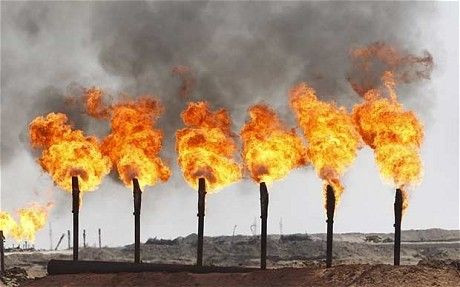US Shale Gas Boom Won’t Boost GDP Growth, Job Gains

The U.S. shale gas boom will not lead to a near-term surge in U.S. gross domestic product growth or to a substantial decline in the unemployment rate, according to HSBC Chief U.S. Economist Kevin Logan.
"The impact of the U.S. shale gas boom on the wider U.S. economy should not be exaggerated," Logan wrote in a note to clients.
The introduction of new extraction techniques -- horizontal drilling and hydraulic fracturing, or "fracking" -- has made it possible to access natural gas deposits that are contained in hard, impermeable geological formations.
As a result, natural gas production in the U.S. has been rising rapidly in the past few years.
In 2011, gas extracted from previously inaccessible shale deposits accounted for 30 percent of all natural gas production in the U.S., up from 4 percent in 2005, according to the U.S. Energy Information Administration. And the boom in natural gas production is expected to continue for the foreseeable future.
The expectation of plentiful supplies led to a 50 percent decline in the average spot price of natural gas from 2005 to 2011, in sharp contrast to the average price of petroleum.
While this phenomenon is likely to set in motion a series of changes that will have profound impacts on the energy industry -the closing of many coal plants, for instance - the dramatic changes have had only small effects on U.S. GDP growth for the last few years and future effects are likely to be small as well, according to Logan.
To begin with, the increase in the supply of natural gas, while substantial, will not increase total energy supply in the U.S. by all that much, at least according to the projections currently developed by the U.S. Department of Energy.
Second, growing supplies of natural gas will replace other fuels in the mix of energy products used in the U.S., but will not necessarily lead to an overall increase in energy consumption or to a substantial decrease in overall energy costs.
The Department of Energy anticipates that the growth in U.S. demand for energy will be relatively modest, rising only about 1.2 percent in the ten years from 2010 to 2020.
"The overall use of energy will shrink relative to GDP as both consumers and businesses find ways to use less energy relative to overall economic activity," Logan said.
If the demand for energy is flat, increased domestic energy production can only add to GDP by replacing imports, which has happened already to some extent.
However, the scope for import replacement has its limits, Logan said.
In 2010, total expenditures on energy products in the U.S. amounted to about 9.2 percent of GDP. Domestically produced energy products accounted for about 77 percent of that total, or about 7 percent of GDP.
According to Logan, if the current trends in the production of natural gas and shale oil continue along the lines expected by the Energy Department, the share of the U.S. energy market supplied by net imports could drop by a third by 2020, from 23 percent to about 15 percent.
Meanwhile, the share of energy expenditures supplied by domestic producers would rise to 85 percent, an increase of about one percent of 2010 GDP.
"If that one percent increase could happen all at once, it would have a noticeable impact on GDP growth," Logan said. "But it will not happen all at once, but instead take place over several years."
"A one percent increase spread out over the ten years between 2010 and 2020 will not add much to the annual growth rate of GDP," he added.
© Copyright IBTimes 2024. All rights reserved.




















